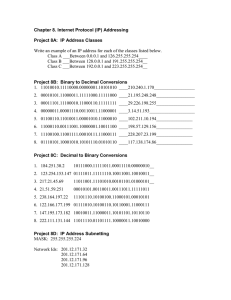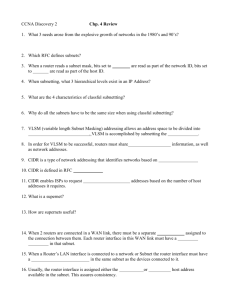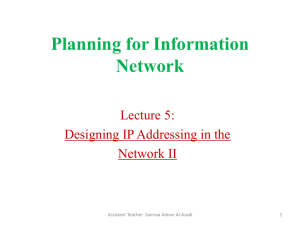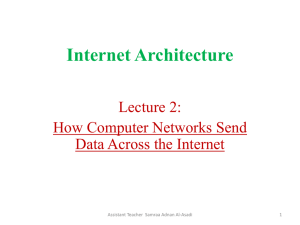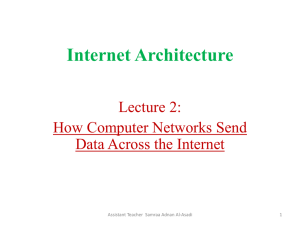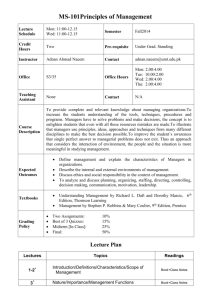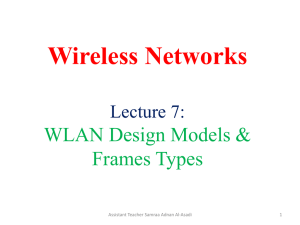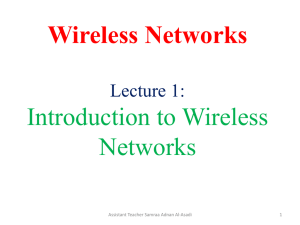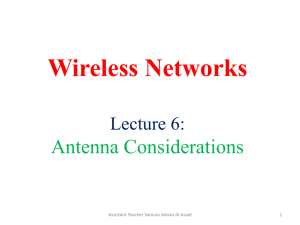Planning for Information Network Lecture 5: Designing IP Addressing in the
advertisement
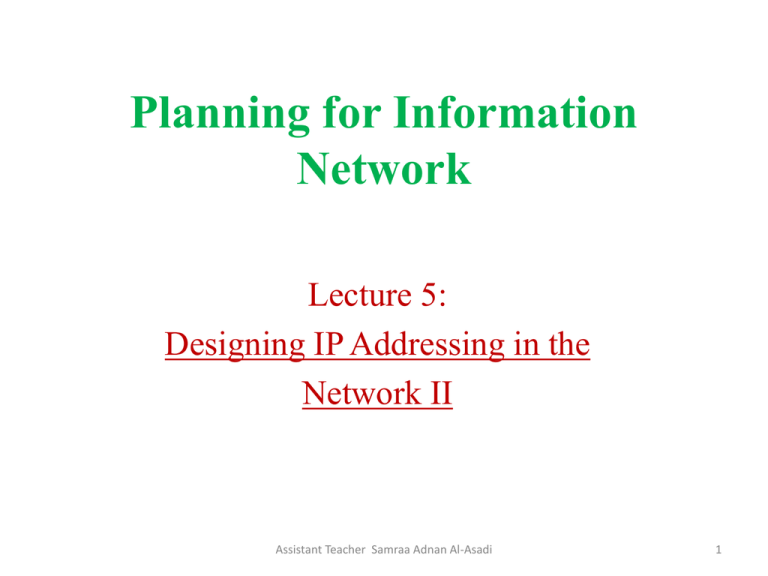
Planning for Information Network Lecture 5: Designing IP Addressing in the Network II Assistant Teacher Samraa Adnan Al-Asadi 1 Subnetting the Subnet When contiguous 1s are added to the default mask, making the all-1s field in the mask longer, the definition of the network part of an IP address is extended to include subnets. Adding bits to the network part of an address decreases the number of bits in the host part. ***The number of subnetworks created is calculated by the formula 2s, where s is the number of bits by which the default mask was extended. Assistant Teacher Samraa Adnan Al-Asadi 2 Subnetting the Subnet **Suppose the IP address 172.16.0.0 /16 , and there are 10 subnets required. Select the appropriate subnet mask value that can accommodate 10 networks. Assigned Address: 172.16.0.0/16 In Binary 10101100.00010000.00000000.00000000 Assistant Teacher Samraa Adnan Al-Asadi 3 Subnetting the Subnet **Suppose the IP address 192.168.0.1 /24 , and there are 3 subnets required. Select the appropriate subnet mask value that can accommodate 3 networks. Assigned Address: 192.168.0.1/24 Assistant Teacher Samraa Adnan Al-Asadi 4 Interconnecting Private and Public Addresses * According to an organization needs, it can use both public and private addresses. * A router or firewall acts as the interface between the network’s private and public sections. * When private addresses are used for addressing in a network and this network must be connected to the Internet, Network Address Translation (NAT) or Port Address Translation (PAT) must be used to translate from private to public addresses and vice versa. * NAT or PAT is required if accessibility to the public Internet or public visibility is required. Assistant Teacher Samraa Adnan Al-Asadi 5 Interconnecting Private and Public Addresses * Static NAT is a one-to-one mapping of an unregistered IP address to a registered IP address. * Dynamic NAT maps an unregistered IP address to a registered IP address from a group of registered IP addresses. * NAT overloading, or PAT, is a form of dynamic NAT that maps multiple unregistered IP addresses to a single registered IP address by using different port numbers. Assistant Teacher Samraa Adnan Al-Asadi 6 Interconnecting Private and Public Addresses • NAT or PAT can be used to translate the following: ■ One private address to one public address: Used in cases when servers on the internal network with private IP addresses must be visible from the public network. The translation from the server’s private IP address to the public IP address is defined statically. ■ Many private addresses to one public address: Used for end systems that require access to the public network but do not have to be visible to the outside world. ■ Combination: It is common to see a combination of the previous two techniques deployed throughout networks. Assistant Teacher Samraa Adnan Al-Asadi 7 Thank you Assistant Teacher Samraa Adnan Al-Asadi 8
